A week in the shop
Published 23 Jul 2018
This last week was not the most productive week in the shop, as I spent quite a bit of time doing software contract work, which is how I pay the bills currently. I did get into the shop for a little bit, so here’s a look back at the week.
First up I tried to plug the hole in the neck that the CNC router damaged a while back. Unlike with the body the hole in the neck isn’t a regular 2D shape, it was a irregular gouge taken from the side when the router bit snapped as the CNC router erroneously drove it into the bed. After clearing it up a little with sand paper and a small file, it looked like only a small amount of the damaged area would be visible once the neck was carved. If you look at the picture below then it’s only the top 2 or 3 mm that’ll remain post neck carve.
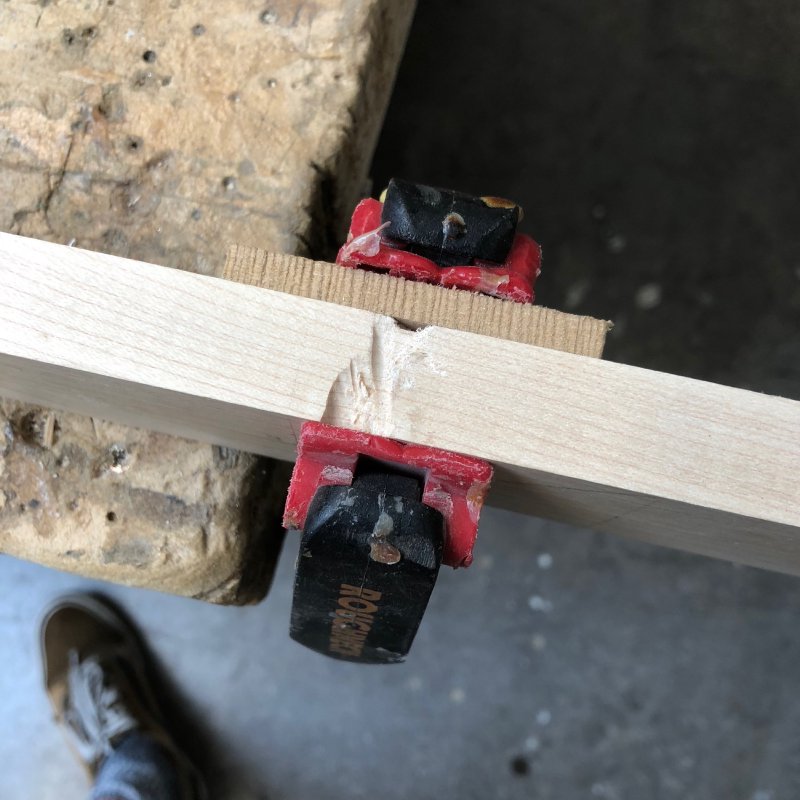
Given the small area that needs patching I thought perhaps I’d try plug it with a mix of sawdust and wood glue. Initially this looked promising:
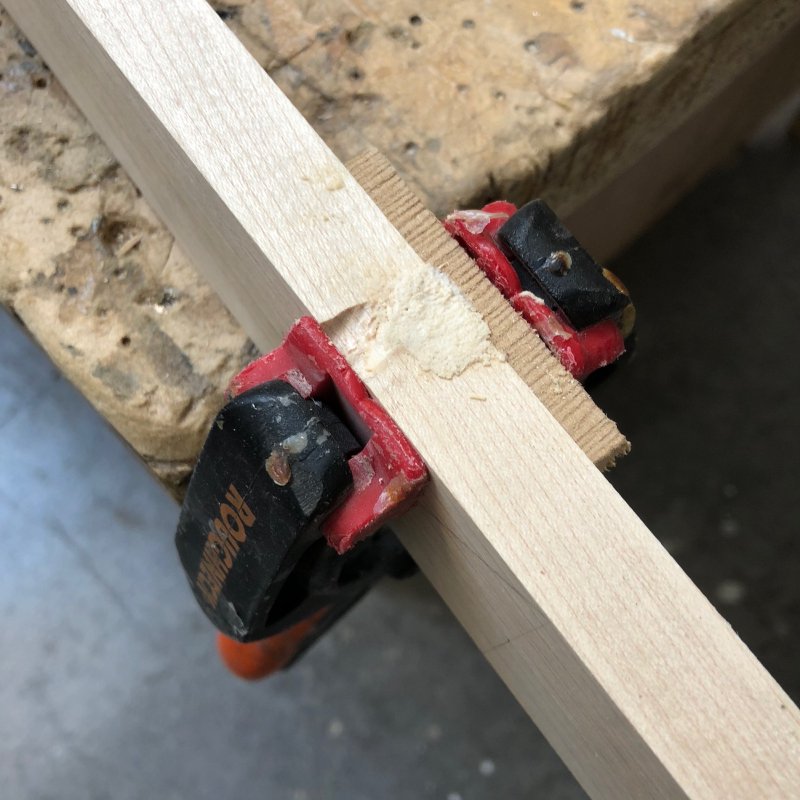
But once it dried it looked a lot less good:
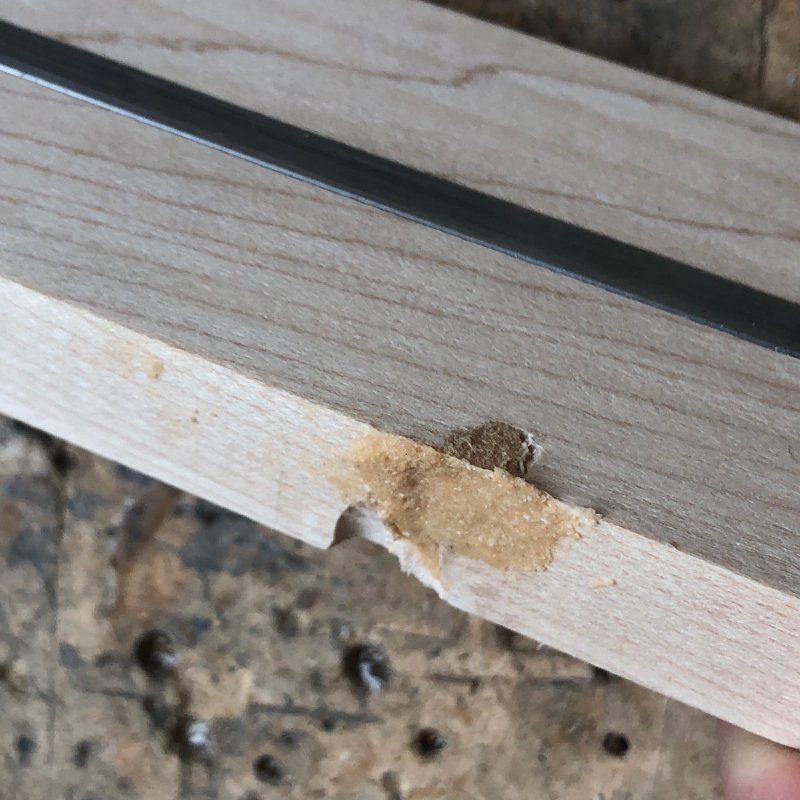
I suspect I’ll live with this for this neck, given there’s other areas of pain I need to deal with and the idea is just to make *something* out of these damaged parts rather than make them perfect, but I must confess that after the success with body patching from a couple of weeks ago I’m a little sad that this didn’t work out as well, but that’s all part of learning. Clearly whilst you can use the sawdust and wood glue trick successfully with dark woods (as I’ve done successfully on wenge) lighter woods it doesn’t work so well on.
My nemesis, also known as Makespace’s CNC Router, also continued to plague me this week. Whilst I don’t trust this machine, it still works will for many people’s purposes and Makespace, and as Makespace is a community workshop and I know more than average about the machine, I’ve become a recognised owner of the machine, and as such I do occasional maintenance on it.
This week we needed to replace the sacrificial bed on the machine; this is the bit of MDF that is anchored to the bed of the machine that people then mount their workpieces to. Having a soft bed like this rather than a metal bed makes using it a lot easier in general (you can just screw your material to the bed rather than fight with lots of annoying clamps), but as the name implies, the sacrificial bed needs replacing from time to time.
Replacing it is fine, but when you do so you also need to level it. The general approach to this is to use a wide router bit (e.g., I have a 1” wide router bit I use for facing off material). But I’d noticed a while ago that doing this was leaving ridges in the material, implying the machine spindle wasn’t truly perpendicular to the machine bed. You can see the effect in this picture I took a couple of weeks ago in the face of this body I was patching - those ridges are because the 1” router bit wasn’t truly flat, but at a slight angle.
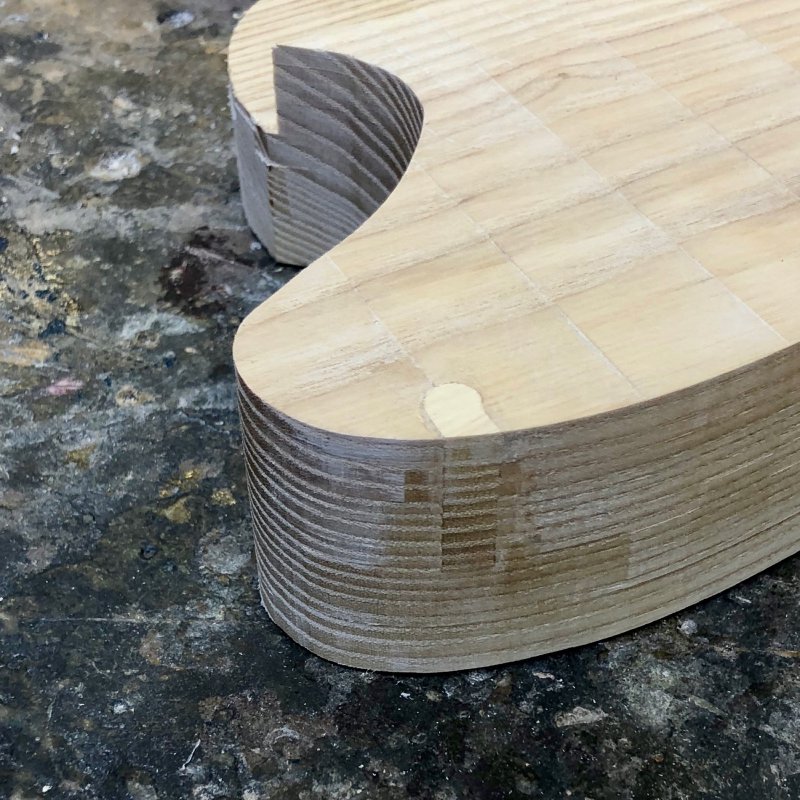
Before I levelled a new sacrificial bed I wanted to see if I could sort out this problem, as there’s no point trying to level something just to have it not actually flat. The way to assess whether the spindle on the router is true or not us by a process called tramming, where you take a “tram”, which is just a bit of metal that fits in the spindle, goes out about 20 cm to the side, and then down a bit. The idea is that if everything is good, then you can fit the tram to the CNC Router, get the tip to touch the bed at one point, and then spin it 180˚, and it should still be touching. If there’s a gap or you can’t turn it due to the tram hitting the bed then you have a non true spindle. You can see the setup here.
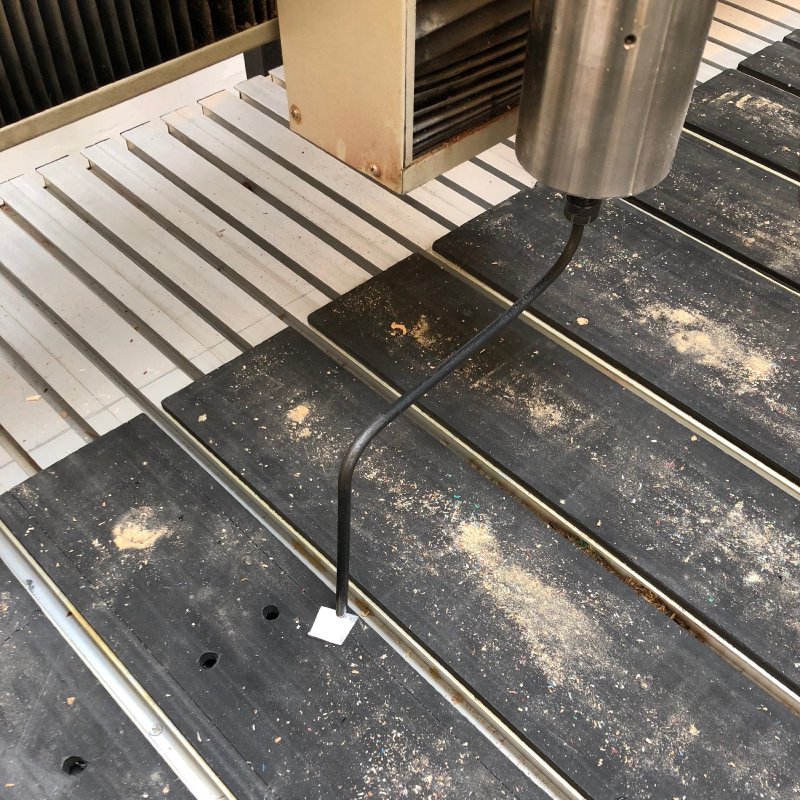
In the picture I’m using a bit of metal over the foam bed cover to make it easier to tell whether I’m hitting or not (whether I get a nice clink or not). Sure enough, when measured I discovered that the spindle was out by about 1.5˚, which is quite a bit for a machine like this.
Now that I knew it was definitely misaligned, the next question is what to do about it. Helped by other, more experienced, Makespace members, we spent an afternoon working back to find the source of the misalignment, which was that the top arm was slightly off, rather than the spindle itself being off. This we found using a Dial Test Instrument (DTI), which is an extremely sensitive gauge that measures small changes in distance as it’s run along a surface.
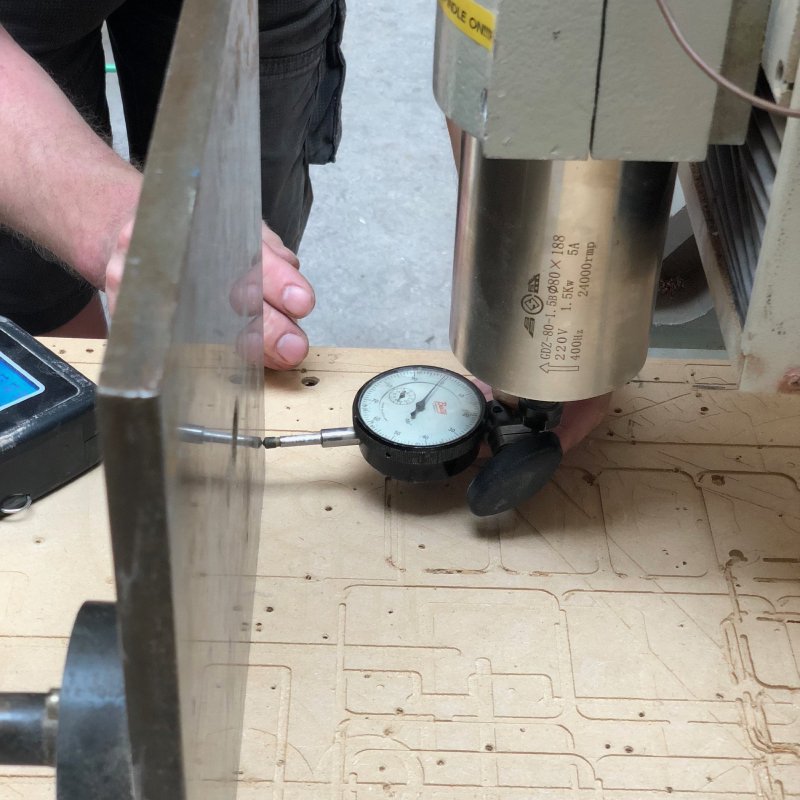
Using this we measured all the degrees of freedom and was pleased to find the misalignment was just limited to the one axis. Having found the source of the mis-alignment, and knowing how much it was misaligned by, we then shimmed the mounts for the main arm by an appropriate amount, which involved a bit of disassembly and re-assembly of the machine.

Afterwards we were left with a wonderfully aligned spindle, and at some point this week I can find a little time to make the new sacrificial bed for the router.
Overall I’m still feeling frustrated I’m not making progress with more guitars: whilst I have managed to finish the prototype offset, of which I’m very proud as my best guitar to date, I’ve not made nearly as much progress, or as many guitars, as I’d hoped. I’m stuck in a kind of limbo right now whereby although I can move things forward by hand, there’s certain jobs where I know it’ll be better done by a working CNC router, and the Makespace CNC router works almost well enough that I end up procrastinating trying to see if I can find ways to move things forward from that perspective. I’d hoped my trip to DoES in Liverpool would provide a more readily available path to completion, but whilst I’d still like to do something with DoES that’s not a short term win in the way I’d hoped.
None of which pontificating and procrastination gets guitars built of course. I need to push more into making myself happy that I have a route to completion on the guitars to a quality level I’m happy with over the next few weeks. I think this is where I’m getting stuck: I have a high quality bar for what I think I can ship as a guitar, and I’m not experimenting enough to try and close that gap based on what I think I can achieve with the tools available to me.
I do also need to start moving on the guitars I have made to cover some of my costs. The prototype offset will go on sale shortly after it completes final setup at full price (£1800), so if that model appeals to your, get in touch, otherwise I imagine it’ll appear on reverb in the next month. I’m also going to sell my P90 based blues deluxe model at some point; my plan is to make it a new neck first as it’s not up to the standard I’d want if charging full price, but given lots of people who have played it have loved it I’m also happy to let it go as is for a discount (50% off, aka £900), so if that guitar feels like your thing then get in touch if you fancy a bargain before I rebuild the neck.